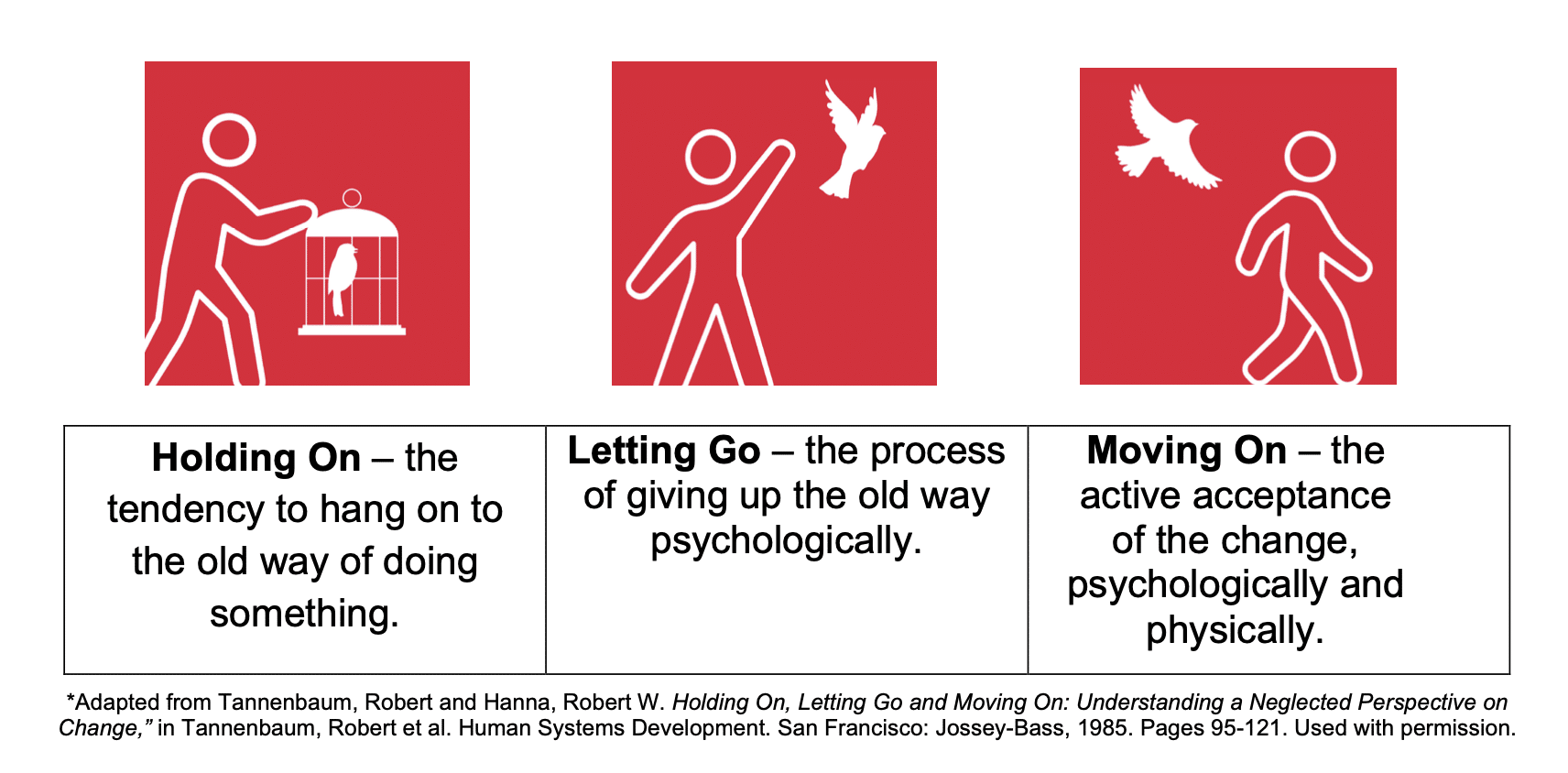If you've ever been on an airplane, you've heard the flight attendant say, “In case of an emergency, secure your oxygen mask before assisting others.”
The same can be said in times of change. As a leader, you are expected to drive change. But what if you struggle with the change you are charged to lead? You will be much more effective in leading change if you first take the time to manage yourself through the process. Here are some tips to put you on the right path.
Be Kind to Yourself
Mark Twain said, “I'm in favor of progress; it's change I don't like.”
The human response to change is to hold on to the old way of doing things because it is familiar and comfortable. Don't beat yourself up if you aren't immediately embracing the change you’re facing. You’re human. Once you have accepted the change – or have no other choice but to change – you will let go of the old way and move toward embracing the new.

Understand the Change
You have to buy in before you can get your employees to buy in and adopt the new. What do you know about the change? What don't you know, and how will you find out? Think like a reporter! The “5-W's + H” questions can help. See how many of these questions you can answer:
- Why are we changing (rationale), and why now? Are there any consequences for not changing?
- What needs to be done? What are the benefits of the change to me, my employees, and the organization? What concerns do I have?
- Where will the change take place (i.e., specific departments)?
- Who will be affected by the change? Who should be leading the change?
- When will the change begin? When will it be complete?
- How will we go about changing?
You probably won't have all of the answers at this time. Prepare a list of questions for your leader and keep the door open to ask more questions as they come up.
“What’s In It For Me?”
Ask yourself, “What’s in it for me to change?” Will you benefit personally? Will it be for the greater good of your employees or the organization? You have to be clear on this answer.
Sometimes, leaders are called to lead changes they may not agree with or are adequately prepared for. Ask yourself, “Can I agree to support and lead this change?” If you can't answer this with a resounding “yes,” you will struggle to lead your employees through the process. Solicit feedback from your fellow leaders; they may see benefits that you may not. Ultimately, to effectively lead the change and gain buy-in from your employees, you need to have the conviction that this is indeed the right change, right now.
Start With the End in Mind
When the change has been launched, what will success look like? Try to envision the best-case scenario. What will it take to get there? What will get in the way? How can you reduce the barriers to success? Who can help remove barriers?
Do a “Check Up From the Neck Up”
It is essential to self-check throughout the life cycle of the change. Change can be stressful and exhausting. It can also be exhilarating and energizing. Emotions are like a check engine light on a car; they signal to us that something needs to be addressed. Like that light, if you ignore your emotions, you could create a more significant issue. Sit with your feelings and ask yourself how you feel about the change. Our thoughts and emotions affect our behaviors, which in turn will influence how others respond to us.
Have A Plan
Whether the change is large or small, it is prudent to have a plan and be able to communicate the plan to all involved. Your employees will look to you for guidance, reassurance, and wisdom during this time of uncertainty.
Before you jump in with a to-do list, remember that your employees will benefit from the opportunity to process the journey ahead. Listen first. Help them work through their emotions. Answer their questions and gain their buy-in. How you manage change today will impact the next change you have to lead – for you and them!



